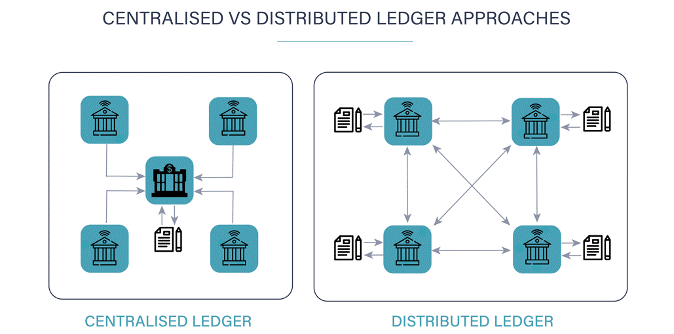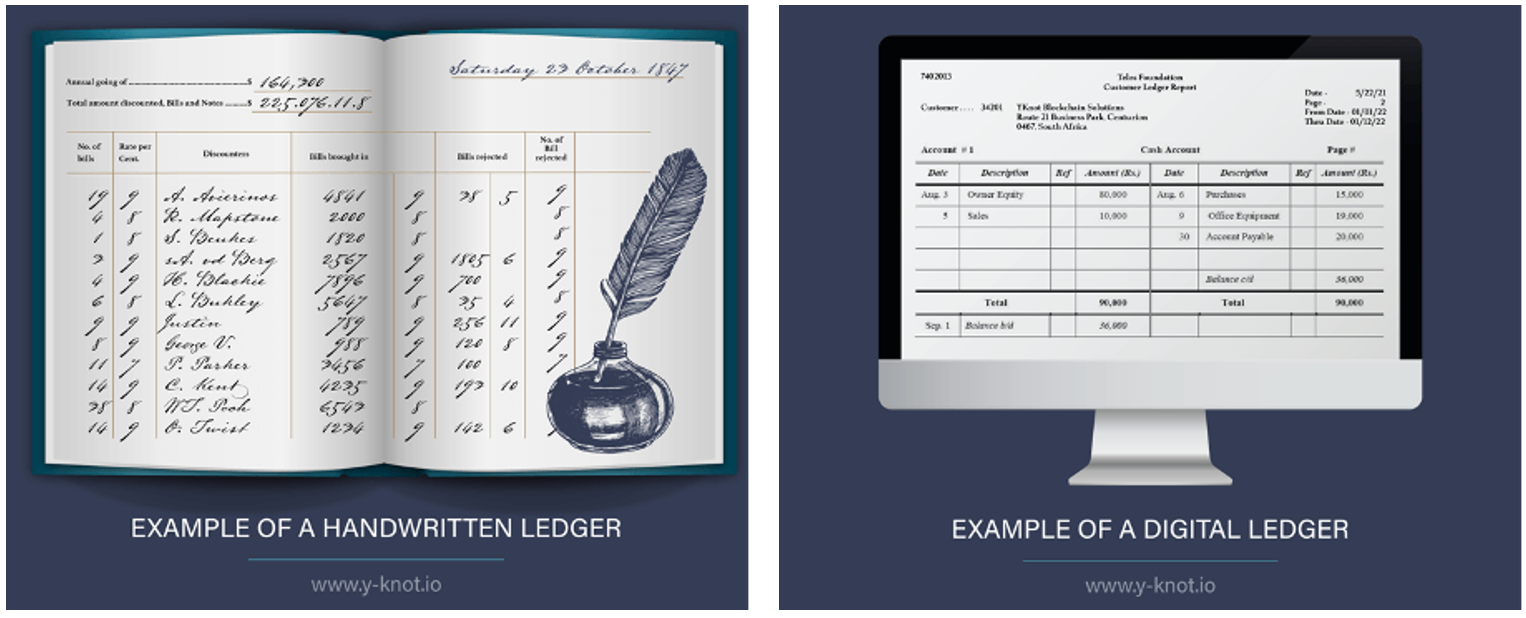Distributed Ledger Technology
Distributed Ledger Technology (DLT)
A distributed ledger is simply a database that exists across several locations (scattered) and among multiple participants (called nodes) across a large network of computers at the same time.
In the previous two instalments we introduced decentralisation, and cryptography which forms the foundation of blockchain and other blockchain-based solutions. We saw that smart contracts can be created to automatically execute operational (business) rules on a blockchain which saves an organisation time and money (more on this topic later).
In this section we are going to turn our attention towards distributed ledger technology (DLT), which forms the basis on which blockchain is built. Distributed ledger technologies (DLTs) have recently attracted the interest of stakeholders across a wide span of industries, including finance, health care, real estate and government. They are on track to bring major disruption to long-standing industries and market structures in the near to medium term [1].
So, what is this all about, and how will these new technologies impact the way we go about our businesses, banking, investing, and e-commerce? These new technologies will interface with - and often challenge - the logic behind a broad spectrum of existing legal regimes. They will force lawmakers, policymakers and regulators at all levels of government — from the subnational to the international — to rethink how best to advance public policy objectives in an increasingly blockchain-powered world [1].
To understand what makes blockchain so amazing, we need to take a step back and have a look at the age-old ledger.
What is a ledger?
In bookkeeping, a general ledger or a nominal ledger, is a collection of financial accounts (usually a book or a database stored on a computer), which keeps a record of accounts payable, receivable, cash management, assets, purchasing and other transactions. Generally, a ledger includes information like the date, description, balance or the total amount for each account. The figure below shows two examples of general ledgers, namely a handwritten ledger and a digital ledger.
Each bookkeeping entry debits one account and credits another account with an equal amount. This process is called the double-entry bookkeeping system. This process helps to ensure that the general ledger is always balanced. In principle, the process is quite simple, but in large organisations with various subsidiaries (like banks), the ledger can grow to be large and can take several hours or days to audit or balance. A ledger can be viewed as a type of database that records transactions.
Generally speaking, our banking system can be described as a centralised ledger system, where the bank keeps track of transactions, and they are tasked with the responsibility of verifying the transactions and the clearing thereof.
To take this discussion further, let us consider the following scenario. Say for example you are the owner of a company, and you record all the profits in a complex general ledger system. You find yourself with a ‘pirate’ in the company which likes to help itself to your hard-earned treasure. The pirate gained access to the ledger and made changes to the data recorded in the ledger to steal your treasure. You became aware of this problem, and decided to find a solution, so that there is no way that one person (entity) can change the entries recorded in your database. The solution needs to be hack-proof, tamper-proof and overall fool-proof.
A distributed ledger is the technology that solves this problem.
A Distributed Ledger
A distributed ledger is simply a database that exists across several locations (scattered) and among multiple participants (called nodes) across a large network of computers at the same time. Hence the term distributed. Most companies make use of a centralised database that exists in a fixed location. But a distributed ledger removes third parties from the process, which makes them quite attractive. DLTs are often used for medical records and title deeds.

The figure above is another example of a centralised ledger (left) in contrast with a distributed ledger approach (right).
In this figure, the central "clearing house" has all the records of each party, and they can make informed decisions about a buyer's ability to deliver on the promise of payment. This makes the centralised approach work well.
A distributed network enables nodes to independently interconnect with each other. Blockchain, which is a form of DLT, has mechanisms in place to allow the nodes to reach consensus regarding transactions before the ledger is updated across all the nodes in the network, making it nearly impossible to maliciously change the data. The consensus mechanism establishes trust in the network, and enables parties to interact with each other, without knowing each other directly or even knowing whether they will deliver on the deal, all because the blockchain consensus mechanism does the heavy lifting, enabling trustless interaction.
DLT has the following advantages over traditional centralised ledger approaches:
- DLT is decentralised in nature, to eliminate the need for a central authority or intermediary to process, validate or authenticate transactions. Records are only ever stored in the ledger when the consensus has been reached by all the parties involved.
- All files in the distributed ledger are time stamped and given a unique cryptographic signature of authentication.
- All of the participants in the distributed ledger network can view all of the records in question (transparent in nature), whereas our traditional centralised ledger systems are not fully transparent, since the clients do not have access to the system and transactions, only those shown.
- DLT reduces the ability for data tampering.
That is a mouthful, but well done. You’re getting there! Now you know that a distributed ledger is simply a database that exists across several locations or among multiple participants, and that the ledger needs to be updated across all the nodes in the network (everyone has the latest copy), which makes it pretty much impossible to tamper with.
References
[1] J. Maupin, "Mapping the Global Legal Landscape of Blockchain and Other Distributed Ledger Technologies", Cigionline.org, 2017. [Online]. Available: https://www.cigionline.org/static/documents/documents/Paper%20no.149.pdf. [Accessed: 10- Jun- 2021].
